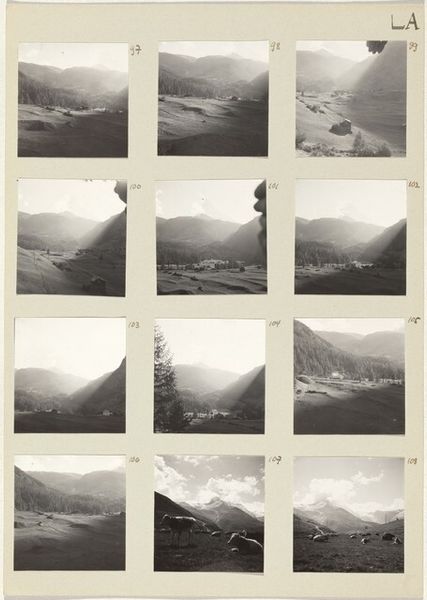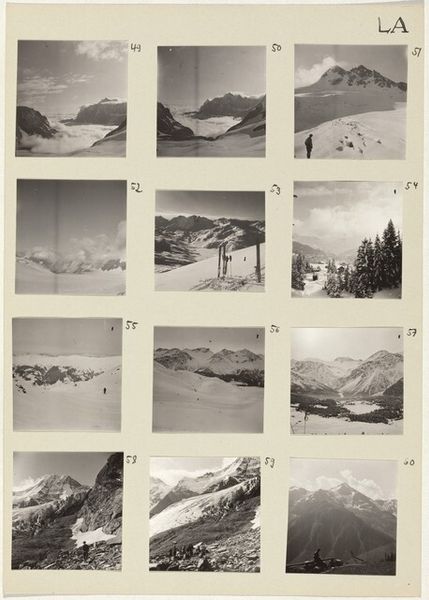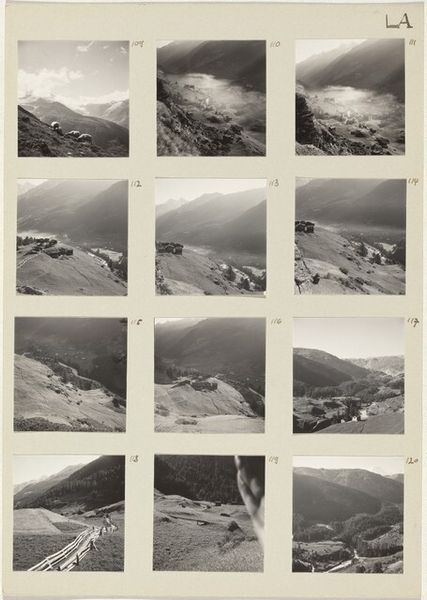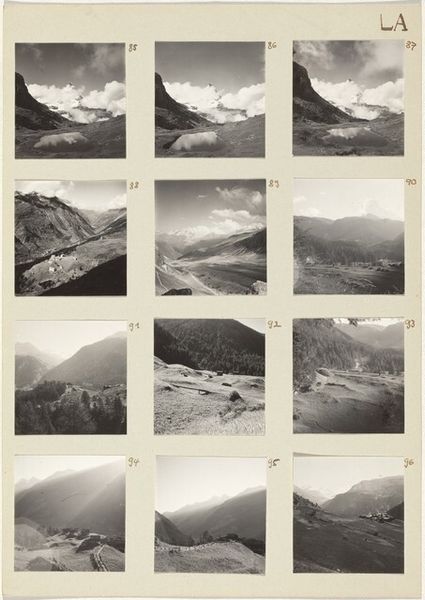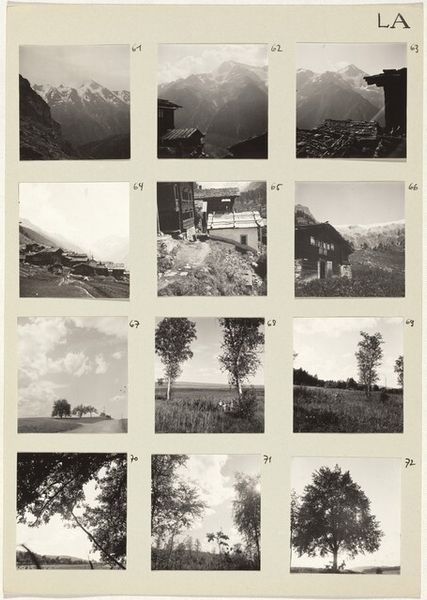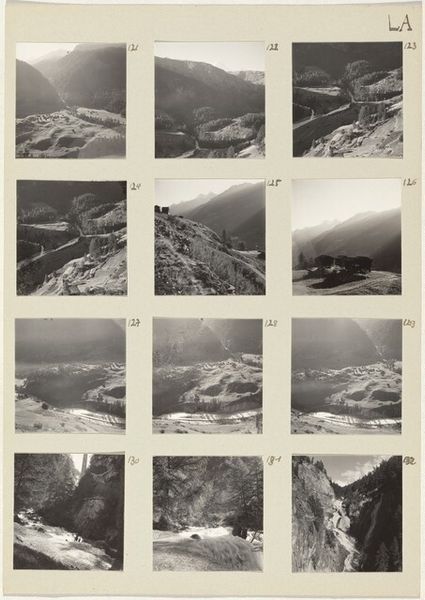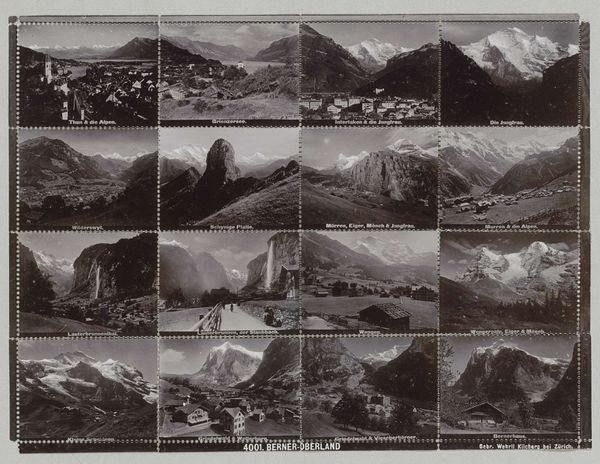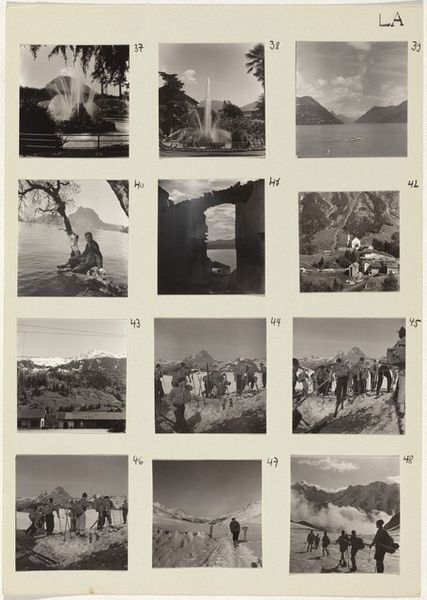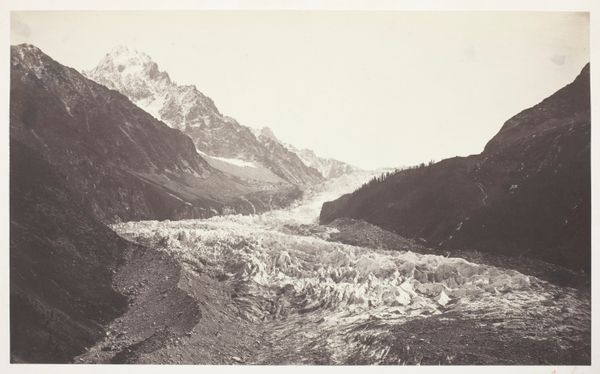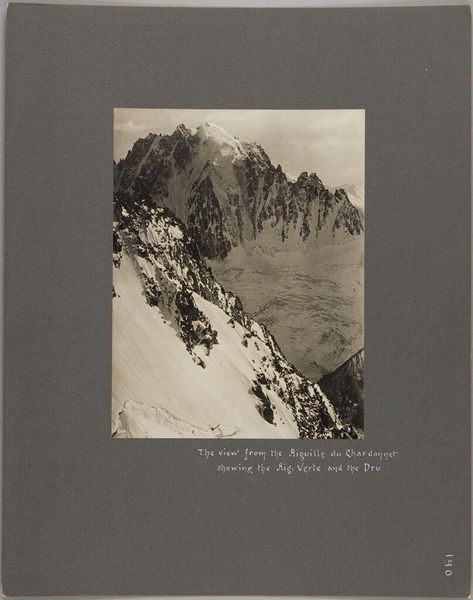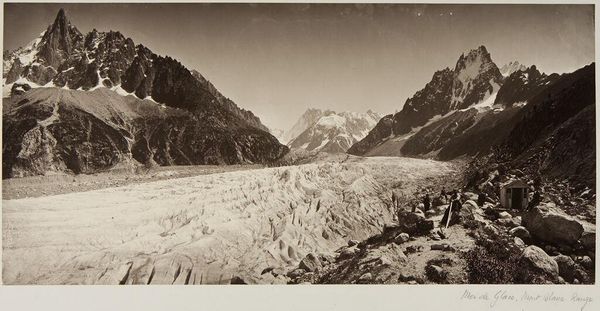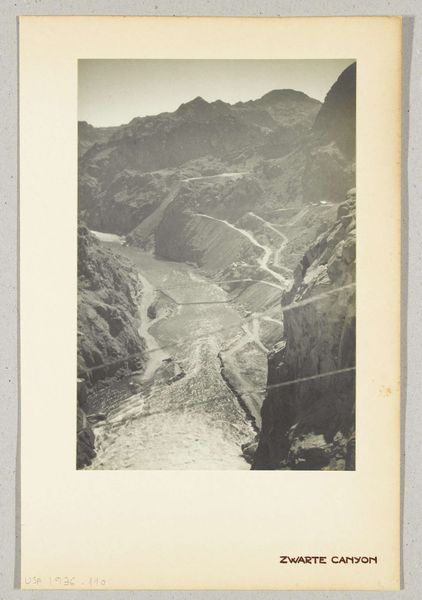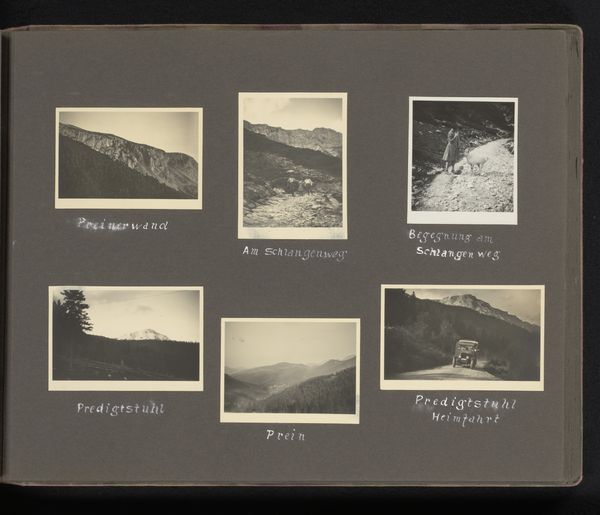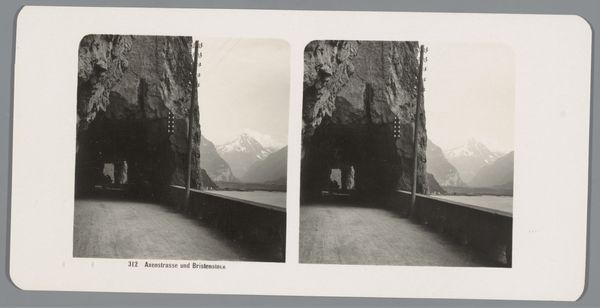
#
old-fashioned
#
aged paper
#
reduced colour palette
#
photo restoration
#
recolouration
#
archive photography
#
desaturated colour
#
old-timey
#
desaturated image
#
newspaper layout
Dimensions: sheet: 29.6 x 21 cm (11 5/8 x 8 1/4 in.)
Copyright: National Gallery of Art: CC0 1.0
Curator: So, we have here Robert Frank's "Die Landschaft (Landscape) 133-144," made between 1942 and 1946. It's a set of twelve gelatin silver prints, a series of photographs arranged on a single sheet. Editor: It strikes me as almost a contact sheet or a preliminary layout. The tonal range is subtle and muted, making it look… historical. How would you interpret this compilation? Curator: What intrigues me is Frank's selection and arrangement. It seems deliberately unpolished, foregrounding the *process* of creating a landscape, not just a romantic ideal. The serial nature undermines any sense of singular "masterpiece," it presents landscape as labor. Editor: I see what you mean about the labour involved: Images of workers cutting or harvesting break up what would otherwise be uninterrupted vistas of Switzerland, Curator: Precisely. These aren't just idyllic views, are they? There's a real emphasis on human intervention within this "natural" space. These images depict labouring the land: materials transformed for consumption and utility. It speaks volumes about the Swiss landscape being constructed by people at work, and how materials and effort become subsumed by the idea of idyllic ‘nature’ as the finished work. The format itself – a collection of images resembling a proof sheet, invites us to consider art and craft as intertwined processes. Editor: That’s a fresh way of putting it, not viewing the work from only its aesthetics! Now I look again, the composition, choice and order, it all indicates an exploration of man and landscape. Did he always take photos in series like this? Curator: Not exclusively, but this approach chimes with a broader trend in post-war photography and art. These practitioners question art, exploring the production methods that underpinned creation itself, shifting value from just finished objects and towards recording how people consume what is produced from resources, while labouring under certain conditions. Editor: It really shifts my perspective; I initially looked at it so simply, at face value only! The photo itself is of much lesser importance than his act of capturing his surroundings under such economic stress.
Comments
No comments
Be the first to comment and join the conversation on the ultimate creative platform.
